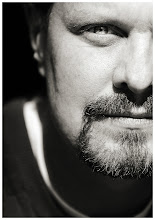Watching the presidential primaries in Iowa and New Hampshire got me thinking about the opportunities I had photographing presidents and the special challenges that came with those assignments.
I had always wanted to cover a campaign but I also knew that it would be a difficult assignment. (To see an excellent example of coverage of the John Edwards campaign, check the work of my long-time friend News and Observer photographer Robert Willett here: Edwards story. ) Willett has established a relationship with the Edwards family over the years and it really shows in his photos.
Being on the campaign trail gives photographers the opportunity for access they will never get once the candidate becomes president.
Access is often the key to great photojournalism and it has become much harder to come by in politics, sports and entertainment. Public relations and marketing interests try to control the image of their clients and don't want to allow images that they feel don't show them in their "best" light. But many people would prefer to see artists, athletes and politicians more as real people.
Regardless of your political ideals, I think it is always interesting to photograph the president. Many of my first efforts involved arriving at an airport or speech site hours in advance, going through heavy security (after the Secret Service had done background checks on information they received from the newspaper), fighting for position on a platform with other still photographers and videographers and then waiting to photograph the president with a long telephoto lens.
While interesting at first, I grew a bit tired of never really getting close to the president and getting a chance to get a better variety of images.
That changed when I got the chance to work in the national pool with the magazine and wire service photographers who travel with and cover the president as a daily assignment. I got the chance to do this on several occasions and found it much more interesting and exciting.
The president's staff would select one local photographer to be the "pool" photographer for the local area. That meant your photos would have to be made available to other newspapers in the state and region. Since The Charlotte Observer was the largest newspaper in the state, our photographers would most often get the opportunity to work as the pool photographer.
Being the pool photographer meant you would be shuttled around with the national pool photographers and you would get much closer access - often just a few feet from the president. (The first photo below was taken with a 10mm lens just a few feet from the podium).
You have to make sure to be ready to use your elbows and move quickly in this highly competitive environment.
I find the primary process a bit confusing but it is interesting. My favorite take on the events come from Miami Herald writer Dave Barry, who has some incredibly humorous observations in his column.
I had always wanted to cover a campaign but I also knew that it would be a difficult assignment. (To see an excellent example of coverage of the John Edwards campaign, check the work of my long-time friend News and Observer photographer Robert Willett here: Edwards story. ) Willett has established a relationship with the Edwards family over the years and it really shows in his photos.
Being on the campaign trail gives photographers the opportunity for access they will never get once the candidate becomes president.
Access is often the key to great photojournalism and it has become much harder to come by in politics, sports and entertainment. Public relations and marketing interests try to control the image of their clients and don't want to allow images that they feel don't show them in their "best" light. But many people would prefer to see artists, athletes and politicians more as real people.
Regardless of your political ideals, I think it is always interesting to photograph the president. Many of my first efforts involved arriving at an airport or speech site hours in advance, going through heavy security (after the Secret Service had done background checks on information they received from the newspaper), fighting for position on a platform with other still photographers and videographers and then waiting to photograph the president with a long telephoto lens.
While interesting at first, I grew a bit tired of never really getting close to the president and getting a chance to get a better variety of images.
That changed when I got the chance to work in the national pool with the magazine and wire service photographers who travel with and cover the president as a daily assignment. I got the chance to do this on several occasions and found it much more interesting and exciting.
The president's staff would select one local photographer to be the "pool" photographer for the local area. That meant your photos would have to be made available to other newspapers in the state and region. Since The Charlotte Observer was the largest newspaper in the state, our photographers would most often get the opportunity to work as the pool photographer.
Being the pool photographer meant you would be shuttled around with the national pool photographers and you would get much closer access - often just a few feet from the president. (The first photo below was taken with a 10mm lens just a few feet from the podium).
You have to make sure to be ready to use your elbows and move quickly in this highly competitive environment.
I find the primary process a bit confusing but it is interesting. My favorite take on the events come from Miami Herald writer Dave Barry, who has some incredibly humorous observations in his column.
 I was up close with the national pool when I got this shot in 2005
I was up close with the national pool when I got this shot in 2005



















No comments:
Post a Comment